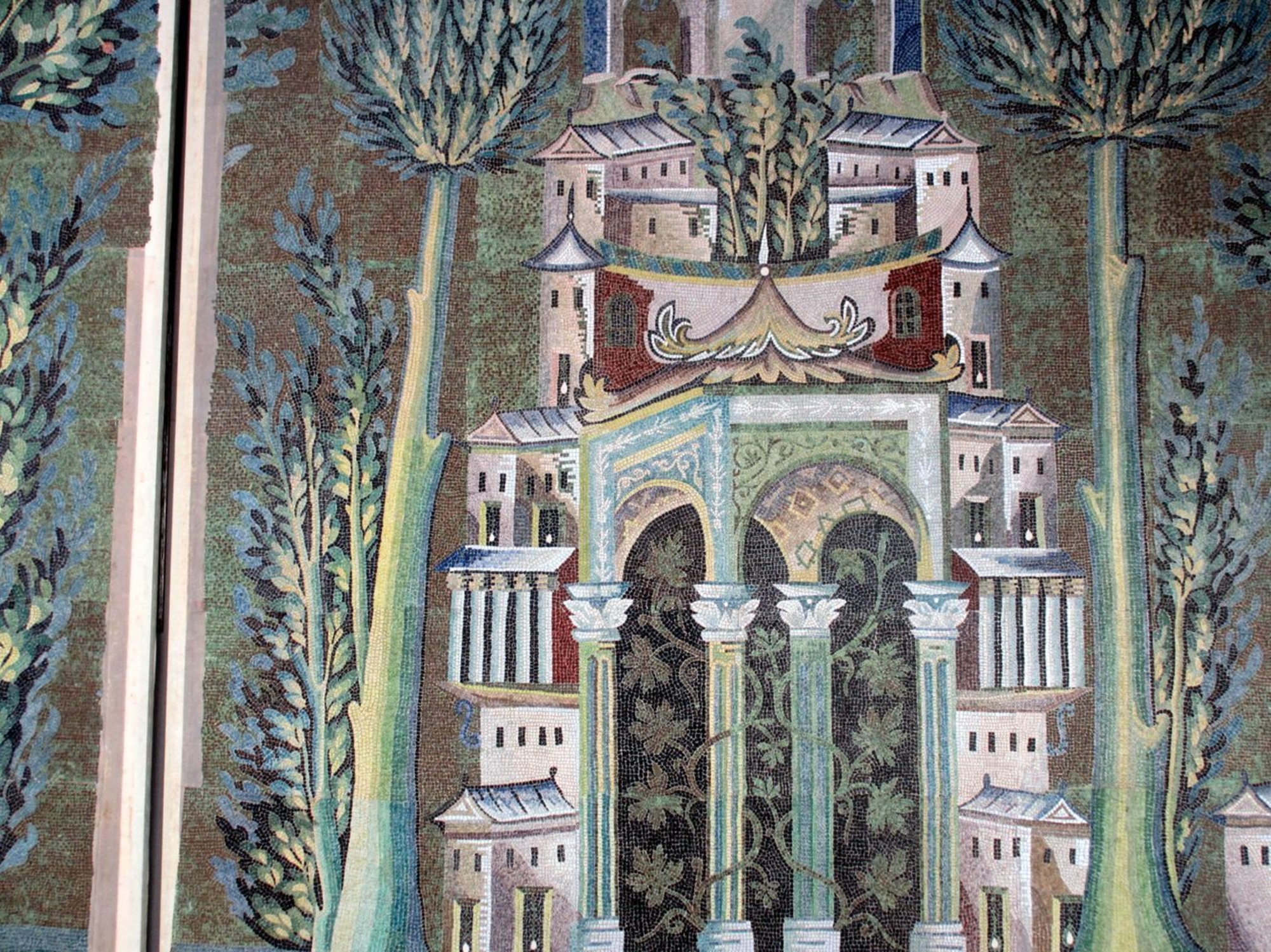- Home
- The mosaic decoration
- Rediscovering the mosaics
- Recording and exposing the mosaics
Recording the mosaics
Victor Eustache de Lorey began to record the mosaics almost immediately after discovering them. He had the decorations systematically photographed and decided to produce facsimiles of them. He entrusted this meticulous task to three young Syrian artists from the recently founded School for Modern Arab Arts. Between 1928 and 1929, Nazmi Khair, Fehmi Kabbani and Kamal Kallass, under the direction of the architect Lucien Cavro, painstakingly copied the mosaics, tessera by tessera. The work was never completed and only nine fragments of the decoration were recorded.
The consecration of Umayyad art
Eustache de Lorey likened the records to “casts” for use in archaeological research and as a means to make the discoveries more widely available to the public. They had a significant impact on research into the arts of Islam. Marguerite Van Berchem subsequently made a study of the mosaics of the Dome of the Rock, which she published in 1932. Strikingly modern to her contemporaries, the records were compared to the works of living artists such as André Derain. They were shown at nine exhibitions around the world between 1929 and 1958.
Rediscovering the records
After a brief moment in the spotlight, Eustache de Lorey’s records were largely forgotten until Marguerite van Berchem, horrified by the restorations of the 1960s, and keen to find an accurate illustration of the mosaics as they had been in 1928, set out to find them. She managed to track down seven of the records, all of them bequeathed by Eustache de Lorey to the Musée du Louvre. After languishing in the archives for decades, the complete set of records were rediscovered between 1999 and 2006.
They now provide the most accurate representation of the 8th century mosaics in the great mosque of Damascus.
